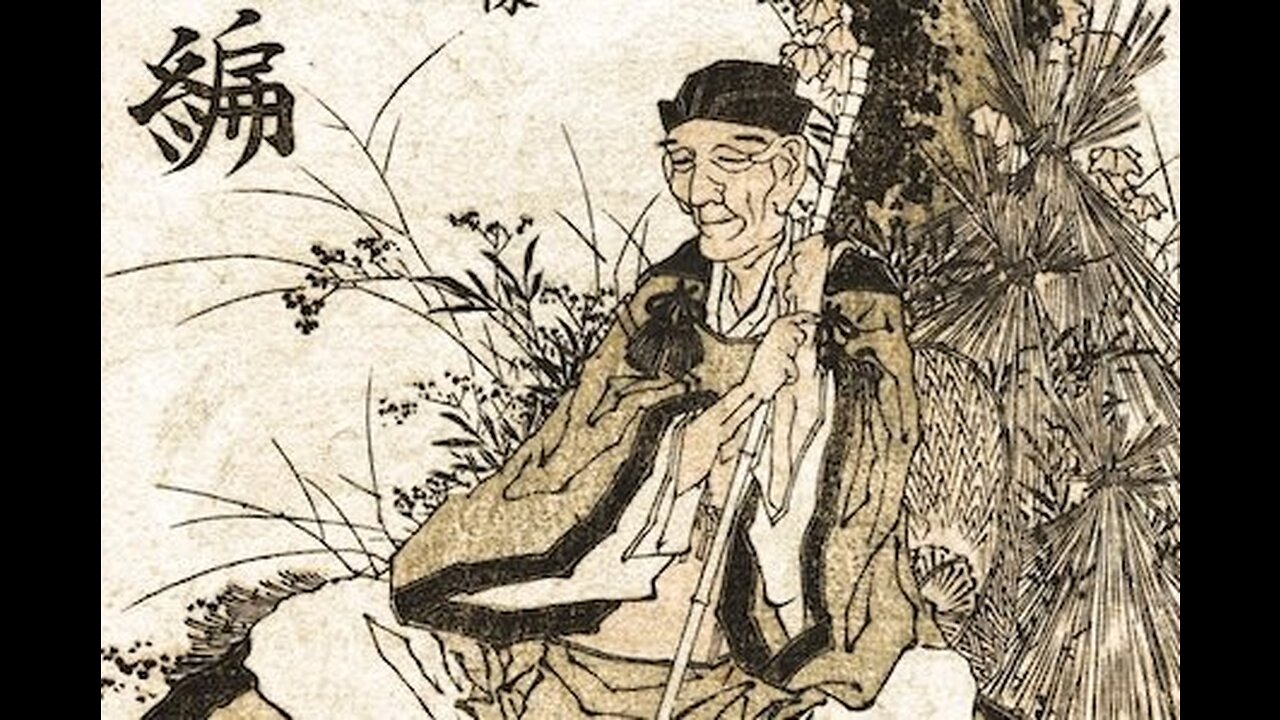Premium Only Content

Haiku master Basho(1644-1694)
The 17th-century Japanese haiku master Basho was born Matsuo Kinsaku near Kyoto, Japan, to a minor samurai and his wife. Soon after the poet’s birth, Japan closed its borders, beginning a seclusion that allowed its native culture to flourish. It is believed that Basho’s siblings became farmers, while Basho, at Ueno Castle in the service of the local lord’s son, grew interested in literature. After the young lord’s early death, Basho left the castle and moved to Kyoto, where he studied with Kigin, a distinguished local poet. During these early years Basho studied Chinese poetry and Taoism, and soon began writing haikai no renga, a form of linked verses composed in collaboration.
The opening verse of a renga, known as hokku, is structured as three unrhymed lines of five, seven, and five syllables. In Basho’s time, poets were beginning to take the hokku’s form as a template for composing small standalone poems engaging natural imagery, a form that eventually became known as haiku. Basho was a master of the form. He published his haiku under several names, including Tosei, or “Green Peach,” out of respect for the Chinese poet Li Po, whose name translates to “White Plum.” Basho’s haiku were published in numerous anthologies, and he edited Kai Oi, or Seashell Game (1672), and Minashiguri, or Shriveled Chestnuts (1683), anthologies that also included a selection of his own work.
-
 2:03:51
2:03:51
TimcastIRL
2 hours agoTrans Minneapolis Shooter BLAMED Massacre On Mom & Gender Transition | Timcast IRL
98.7K97 -
 LIVE
LIVE
Man in America
9 hours agoIT DOESN'T ADD UP: The Trans Shooter's Story Is FULL of Holes
1,046 watching -
 LIVE
LIVE
StevieTLIVE
2 hours agoFriday Night Warzone HYPE
290 watching -
 LIVE
LIVE
SynthTrax & DJ Cheezus Livestreams
1 day agoFriday Night Synthwave 80s 90s Electronica and more DJ MIX Livestream Michael Jackson / AI Art Compilation Edition
254 watching -
 1:03:57
1:03:57
Sarah Westall
2 hours agoMara Lago Accord Joins the Fed, Fed Waves the White Flag & more w/ Andy Schectman
1.22K -
 LIVE
LIVE
I_Came_With_Fire_Podcast
1 day ago*BREAKING* Special Guest Katarina Szulc
120 watching -
 LIVE
LIVE
megimu32
2 hours agoOFF THE SUBJECT: FAFO Friday! Bodycams & Mario Kart Mayhem!
87 watching -
 LIVE
LIVE
Flyover Conservatives
21 hours ago4 Strategies to Create Opportunity from Nothing - Clay Clark | FOC Show
270 watching -
 1:49
1:49
Gaming on Rumble
8 hours agoWhat is the Rumble Creator Program!?!? (Active Premium Creators) | Lvl UP
9.89K2 -
 LIVE
LIVE
Midnight In The Mountains
4 hours agoGaming w/ PER·SE·VER·ANCE | Midnights Play Fortnite | Split Screen Action!
69 watching